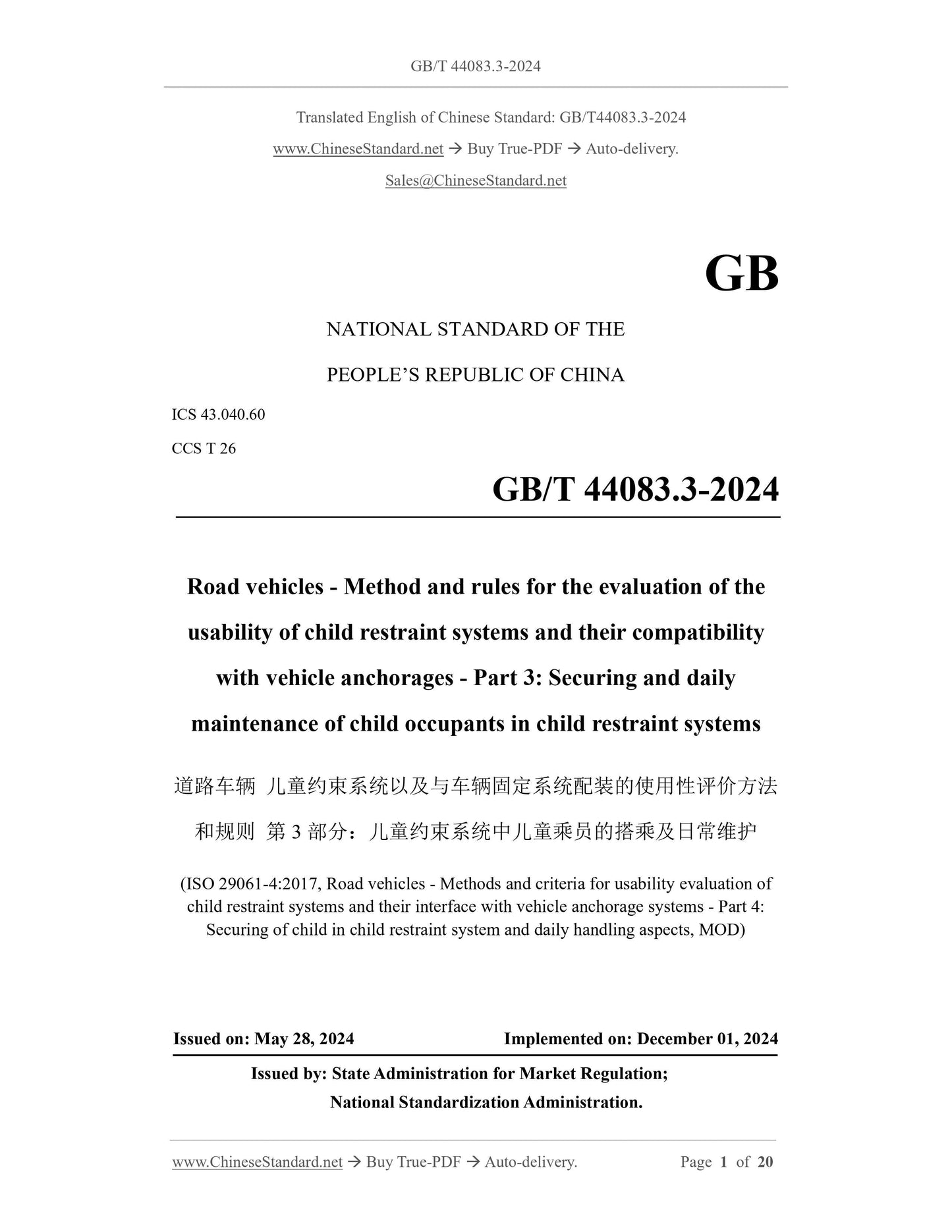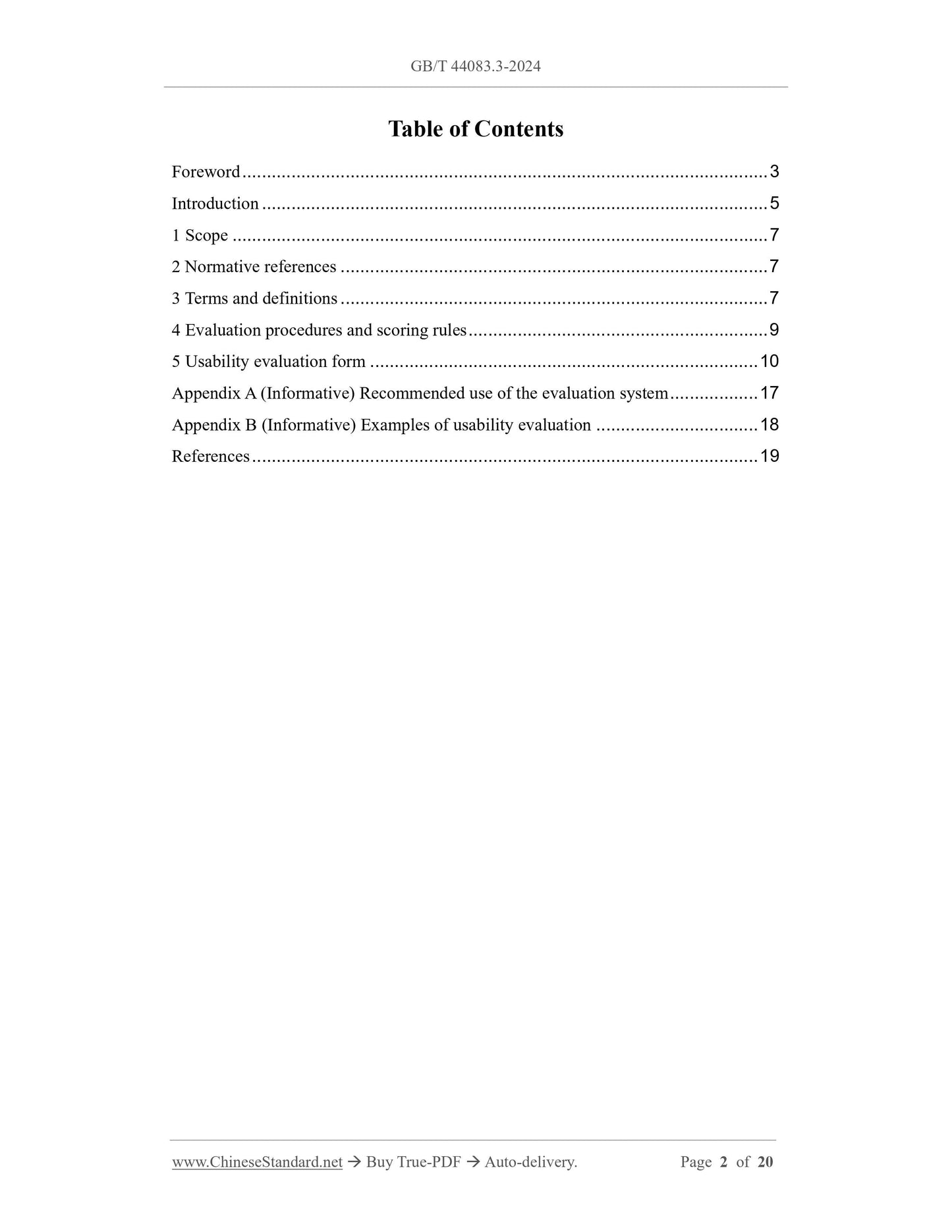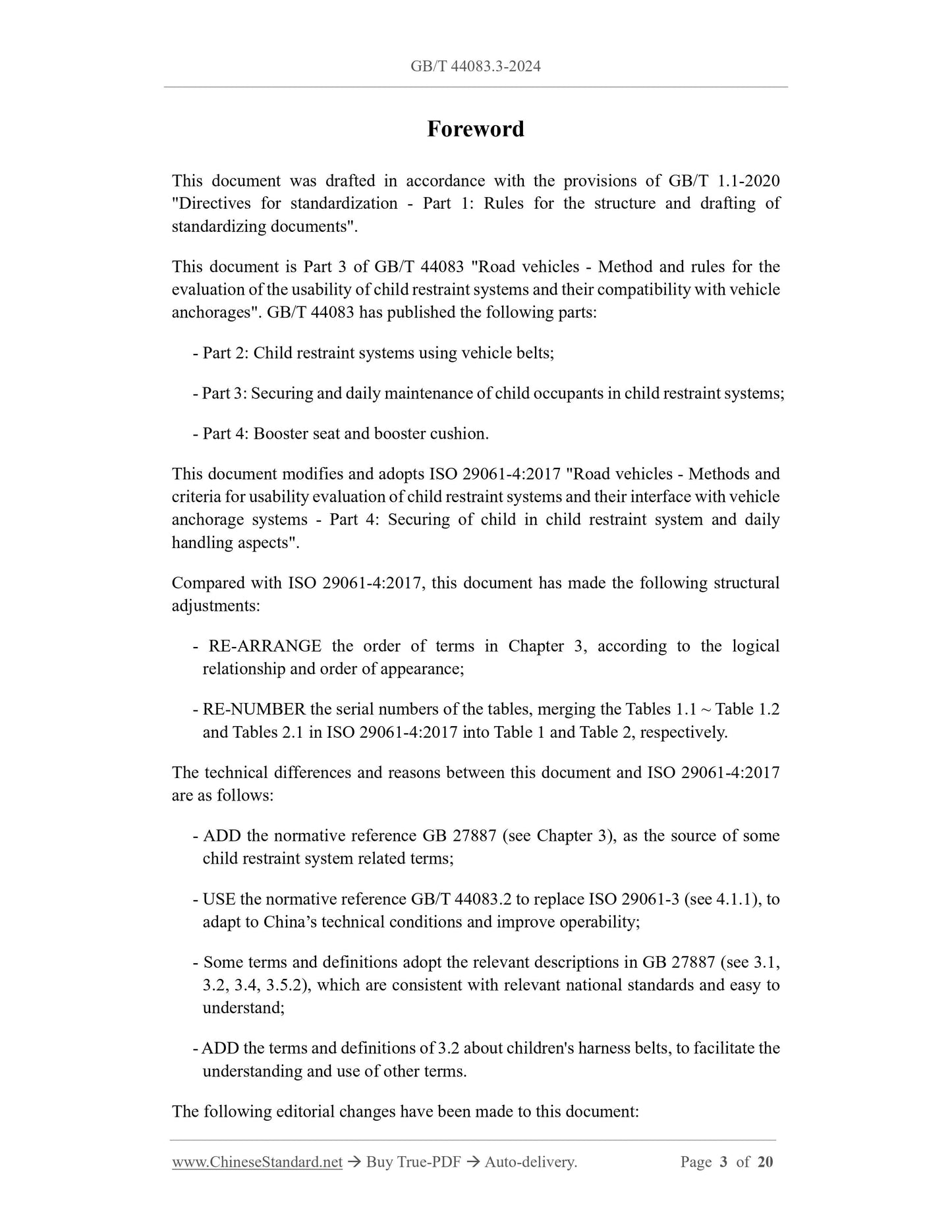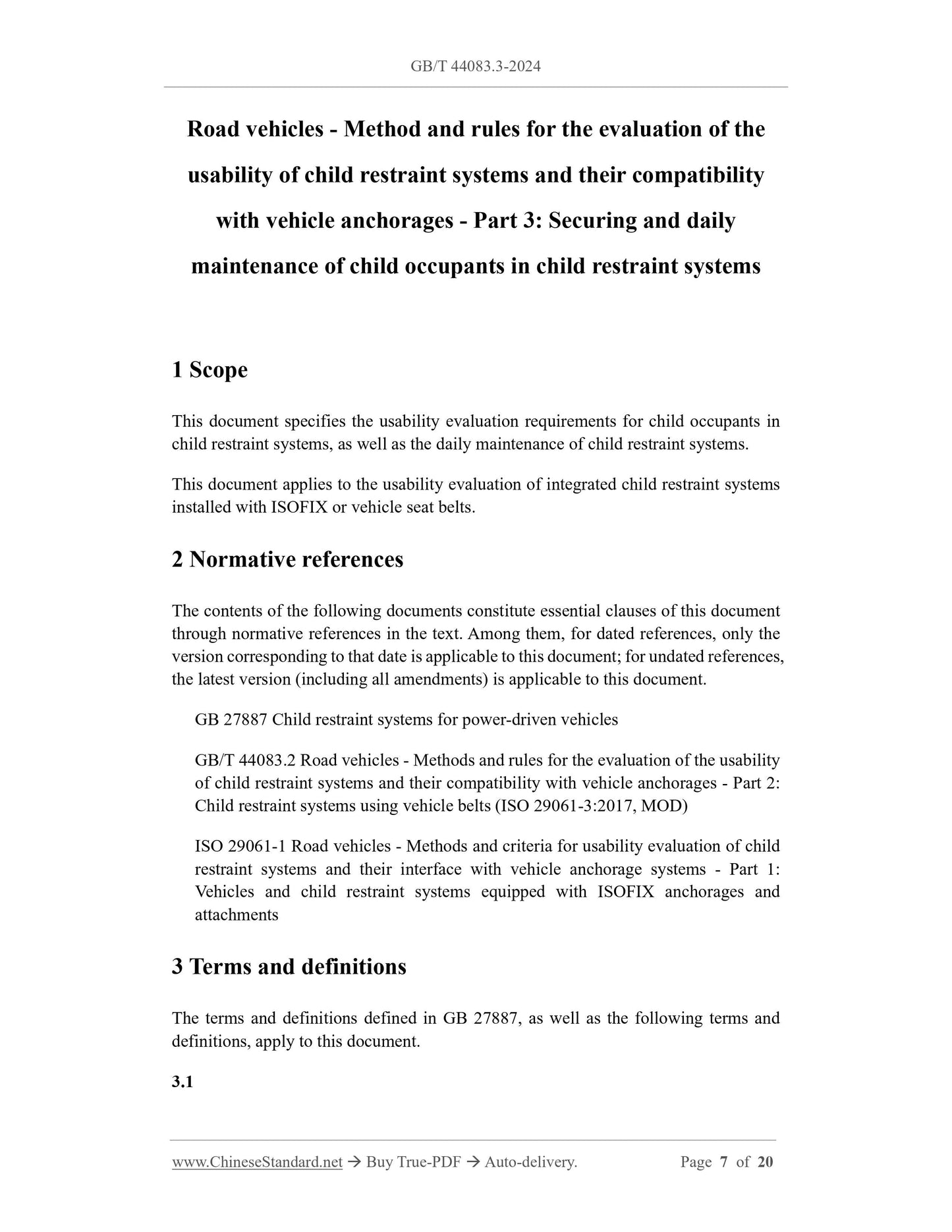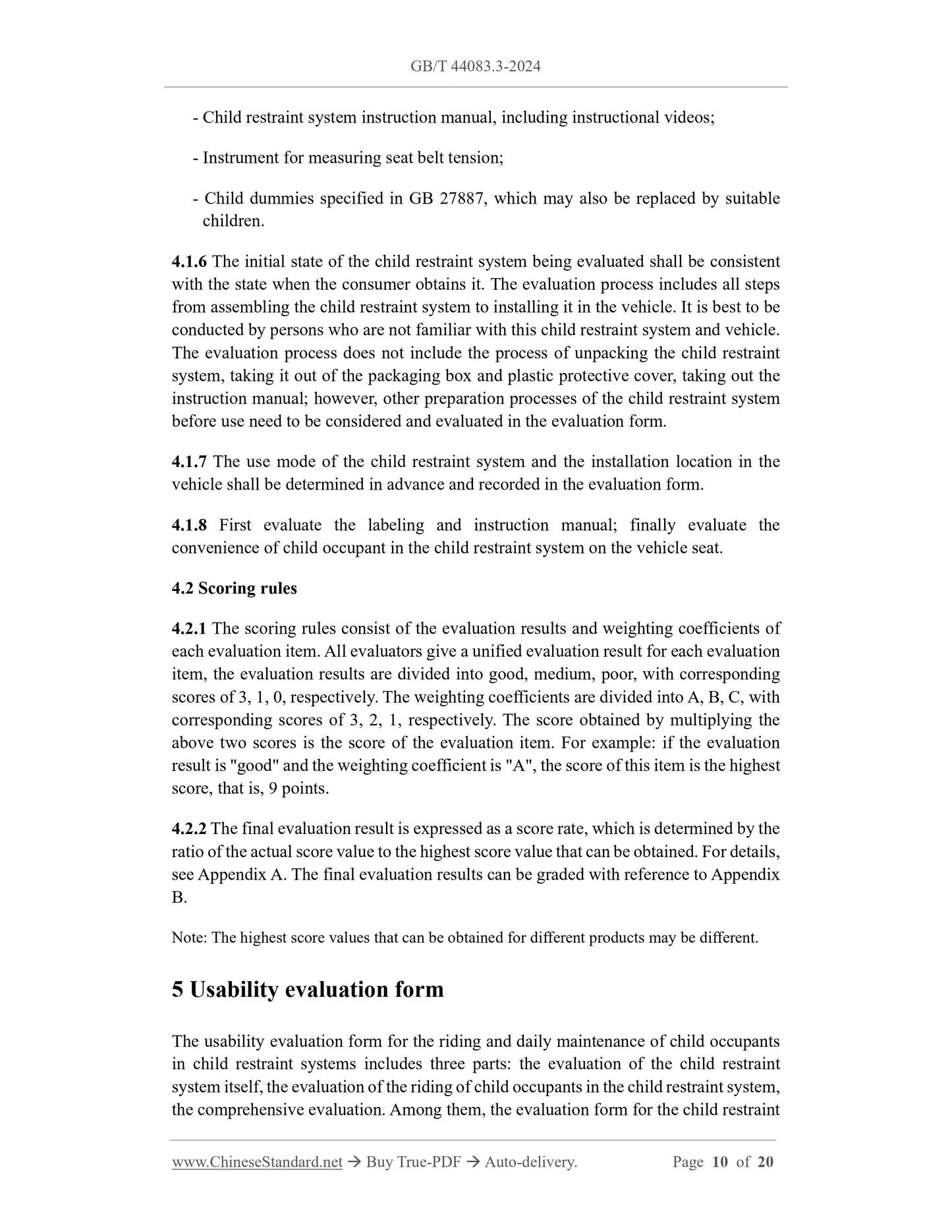1
/
of
5
www.ChineseStandard.us -- Field Test Asia Pte. Ltd.
GB/T 44083.3-2024 English PDF (GB/T44083.3-2024)
GB/T 44083.3-2024 English PDF (GB/T44083.3-2024)
Regular price
$320.00
Regular price
Sale price
$320.00
Unit price
/
per
Shipping calculated at checkout.
Couldn't load pickup availability
GB/T 44083.3-2024: Road vehicles - Methods and rules for the evaluation of the usability of child restraint systems and their compatibility with vehicle anchorages - Part 3: Securing and daily maintenance of child occupants in child restraint systems
Delivery: 9 seconds. Download (and Email) true-PDF + Invoice.Get Quotation: Click GB/T 44083.3-2024 (Self-service in 1-minute)
Newer / historical versions: GB/T 44083.3-2024
Preview True-PDF
Scope
This document specifies the usability evaluation requirements for child occupants inchild restraint systems, as well as the daily maintenance of child restraint systems.
This document applies to the usability evaluation of integrated child restraint systems
installed with ISOFIX or vehicle seat belts.
Basic Data
| Standard ID | GB/T 44083.3-2024 (GB/T44083.3-2024) |
| Description (Translated English) | Road vehicles - Methods and rules for the evaluation of the usability of child restraint systems and their compatibility with vehicle anchorages - Part 3: Securing and daily maintenance of child occupants in child restraint systems |
| Sector / Industry | National Standard (Recommended) |
| Classification of Chinese Standard | T26 |
| Word Count Estimation | 18,113 |
| Date of Issue | 2024-05-28 |
| Date of Implementation | 2024-12-01 |
| Issuing agency(ies) | State Administration for Market Regulation, China National Standardization Administration |
Share
